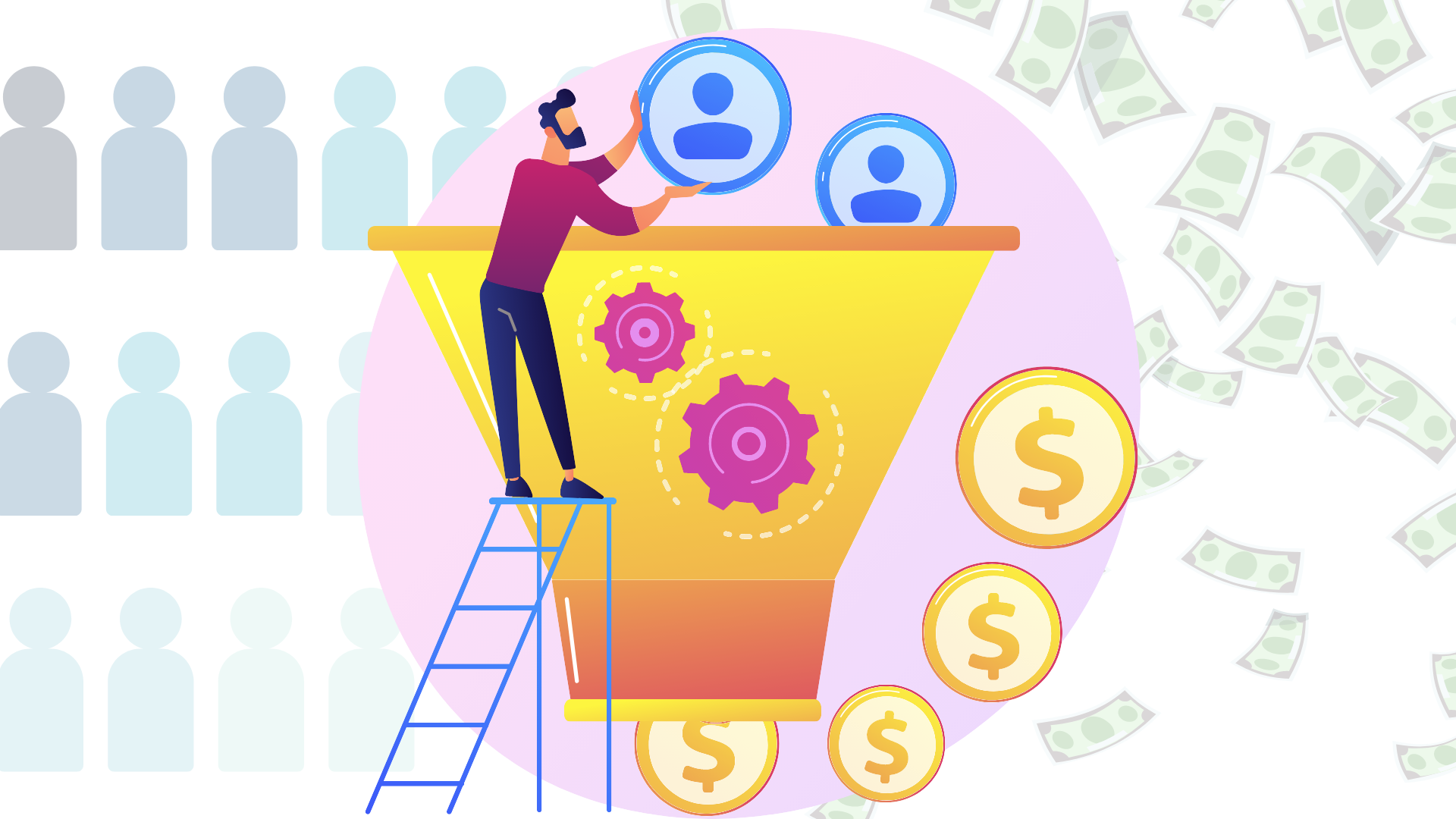
15 Oct Here’s How to Convert Your Visitors into Customers
Approximately 95% of your website visitors are not ready to make a purchase. They won’t buy your product or service right away, so how can you convert them into customers?
The key is to optimize your website for different stages of the sales funnel. By understanding what a sales funnel is and how it works, you’ll be able to convert more leads into paying customers.
What is sales funnel?
The sales funnel outlines a prospect’s journey from their first interaction with your business to becoming a paying customer. An inverted pyramid represents the customer journey, with the most potential customers at the top and the fewest at the bottom.
The stages of a sales funnel may vary, but the majority have these 4 stages:
- Awareness: At this stage, you provide your prospects with information about who you are, what you offer, and how you differ from your competitors.
- Interest: Prospects are now evaluating whether your product or service meets their needs.
- Desire: At this point, your prospects are more interested in what your business offers, including different options and pricing, before they make a final decision.
- Action: Prospects are now ready to contact you and become paying customers.

Here’s How to Convert Your Visitors into Customers
1) Identify your target audience
Create a buyer persona for your target audience. If your sales funnel is set up to target the wrong personas, you are wasting your time and money. Here’s a guide from HubSpot that will help you with this. Consider gender, age, income, location, etc. Once you have researched your audience, marketing to them and converting them to paying customers will be easier.
Additionally, you should understand your competitors too, especially those who are performing well. You can use this Traffic Analytics tool to gain insight into their traffic sources, top-performing content, and what works for them.
2) Write informative content based on customer needs
According to Conductor, 131% more people are likely to buy from a brand after reading an educational piece of content. In this way, you position yourself as an expert and gain trust from your audience.
Think about your current and past customers when coming up with content ideas. Make a list of the most common questions you’ve heard over the years. Asking customers what questions they have can also give you some ideas. You can check out forums like Reddit or Quora to see what people are talking about. Google Trends can be helpful as well.
3) Collect the email address of your prospects
Create a sign-up form where prospects can fill out their email addresses, then use those emails to send them information about your product or service, valuable content, and other updates. This is highly effective for establishing a relationship and gaining your prospect’s trust.
Their willingness to share their email address with you is one of the first signs that they are open to working with you, and are interested in what you offer.
4) Provide social proof
Social proof comes in many forms, and it can be utilized in a variety of ways within your sales funnel. Use the following on your landing page to move buyers towards a purchase.
- Customer count
- Video testimonials
- Positive reviews
- Industry awards
- Client logos
5) Display a prominent call to action (CTA)
You should use a clear CTA to motivate prospects to buy from your brand. Use CTA copy that encourages prospects to close the deal, such as:
- Schedule your appointment
- Book now
- Go premium
- Buy your favorites today
- Secure membership access
- Start your free trial
Your CTA needs to be visually appealing. If your CTA is a button, use a color that contrasts with the background. Consider placing the CTA in a prominent location. Visitors might not read through the entire page. Therefore, you should place CTAs throughout your website so prospects can see them while they scroll through.
6) Identify where people are stopping in your funnel
Track specific website events and conversions with an analytics tool like Google Analytics. By looking at metrics like bounce rate and exit rate, you can identify which pages are keeping users from moving forward. Analyze not only your best-performing pages but also your worst-performing pages.
7) Run tests on your website
After you have identified your marketing funnel gaps, test, test, test. People reading your content but not subscribing to your newsletter may require changes to your call to action, page elements, or designs.
Were there any common elements among your best-performing pages? Consider bringing the elements of high-performing pages to your low-performing ones. Be sure to test one element at a time. If too many things are updated at once, it might be harder to know which change has made the difference.
